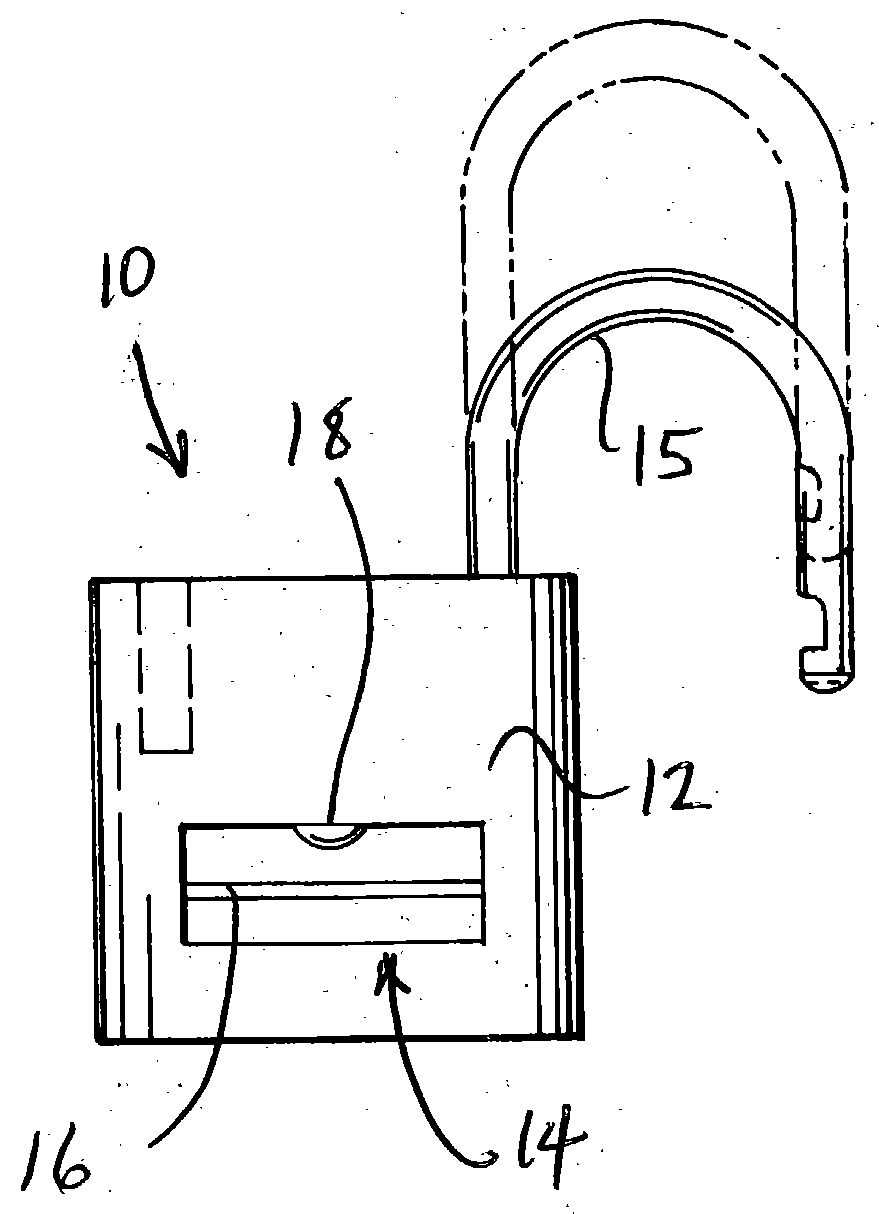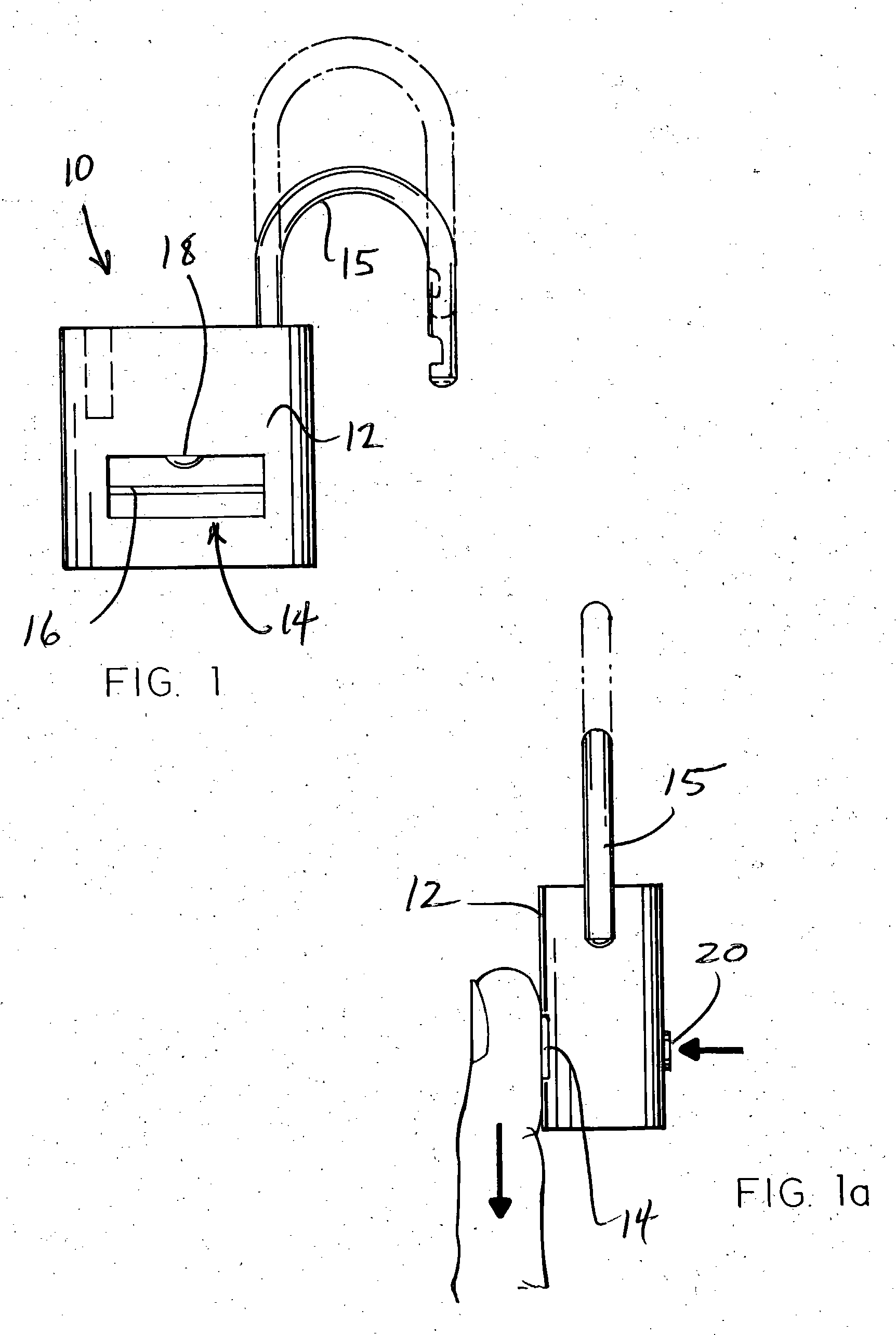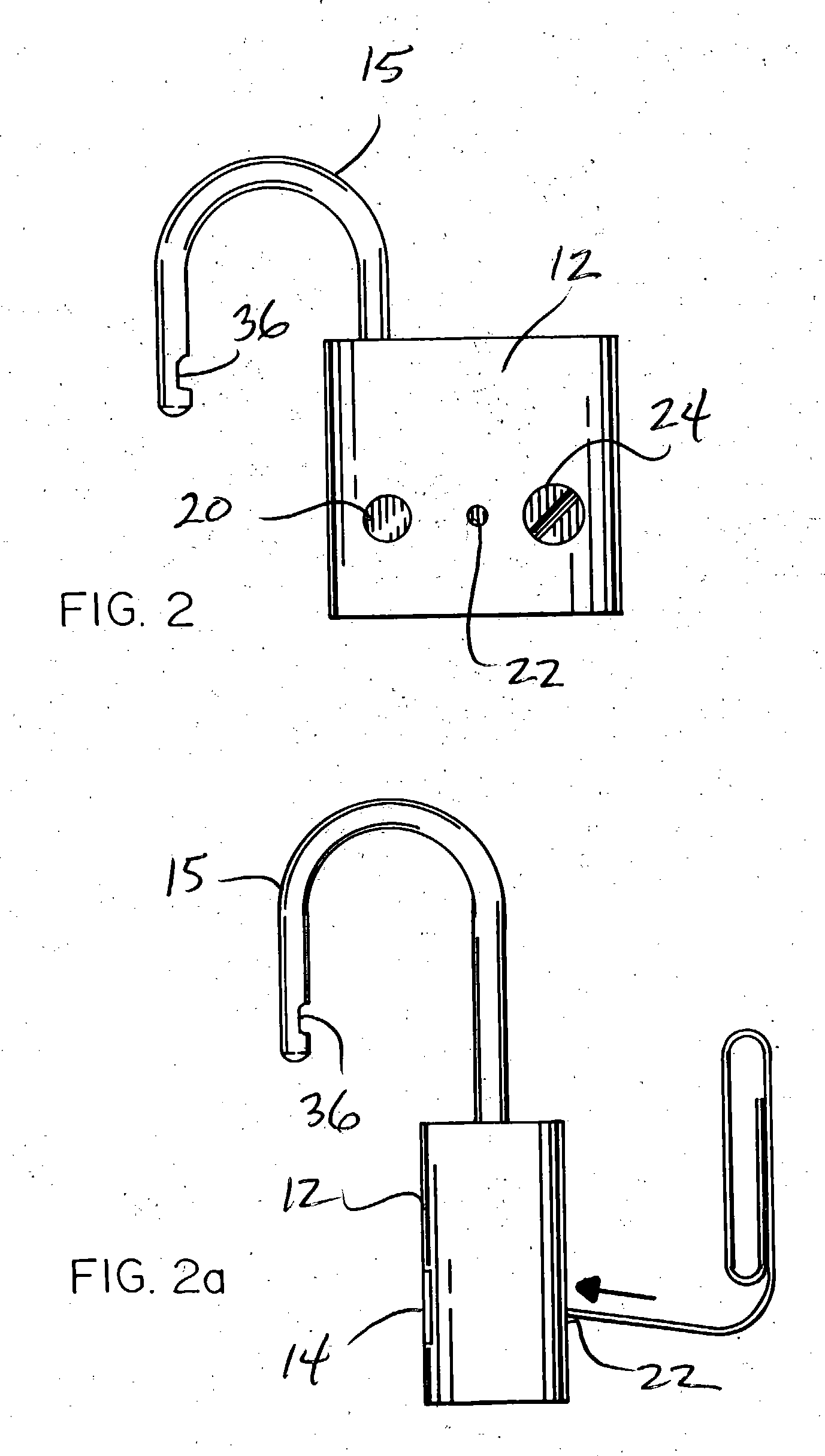Biometric padlock
- Summary
- Abstract
- Description
- Claims
- Application Information
AI Technical Summary
Problems solved by technology
Method used
Image
Examples
Embodiment Construction
[0023] Referring to the accompanying drawings, it will be seen that a padlock 10 comprises a body 12, a locking arm or shackle 15, a biometric member 14, the latter comprising a "U" button 18, a line sensor or reader 16, a "P" button 20, a reset button 22, a battery access 24, a printed circuit board (PCB) 26, a sensor board 28, a solenoid 30, a magnetic pole 32, a locking pin 34, a spring 35 and a shackle recess 36.
[0024] The body 12 is of conventional size and shape as compared to key lock or combination lock padlocks. Similarly, locking arm or shackle 15 is of a typical shape and size as compared to ordinary padlocks. However, unlike a conventional padlock, as shown in FIG. 1 and FIG. 1a padlock 10 comprises a biometric member having an unlock activation ("U") button 18 and a fingerprint reader line sensor 16 on one side of the body 12 and as shown in FIG. 2 and FIG. 2a, a programming activation ("P") button 20 and reset switch 22 on the opposite side of the body 12. Also include...
PUM
 Login to View More
Login to View More Abstract
Description
Claims
Application Information
 Login to View More
Login to View More - R&D
- Intellectual Property
- Life Sciences
- Materials
- Tech Scout
- Unparalleled Data Quality
- Higher Quality Content
- 60% Fewer Hallucinations
Browse by: Latest US Patents, China's latest patents, Technical Efficacy Thesaurus, Application Domain, Technology Topic, Popular Technical Reports.
© 2025 PatSnap. All rights reserved.Legal|Privacy policy|Modern Slavery Act Transparency Statement|Sitemap|About US| Contact US: help@patsnap.com



